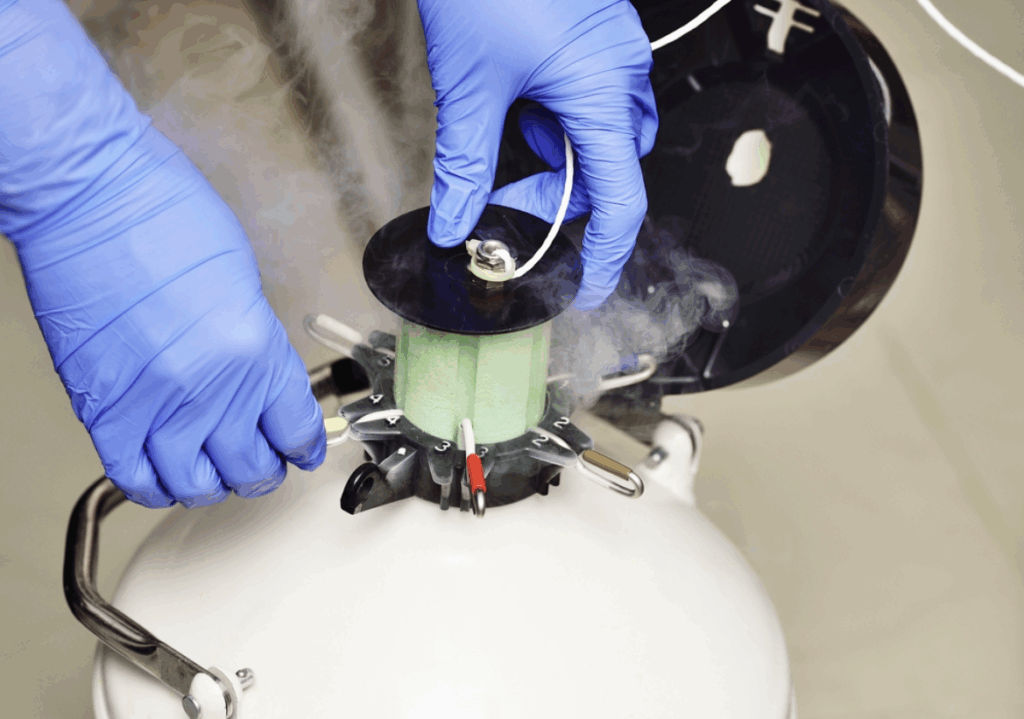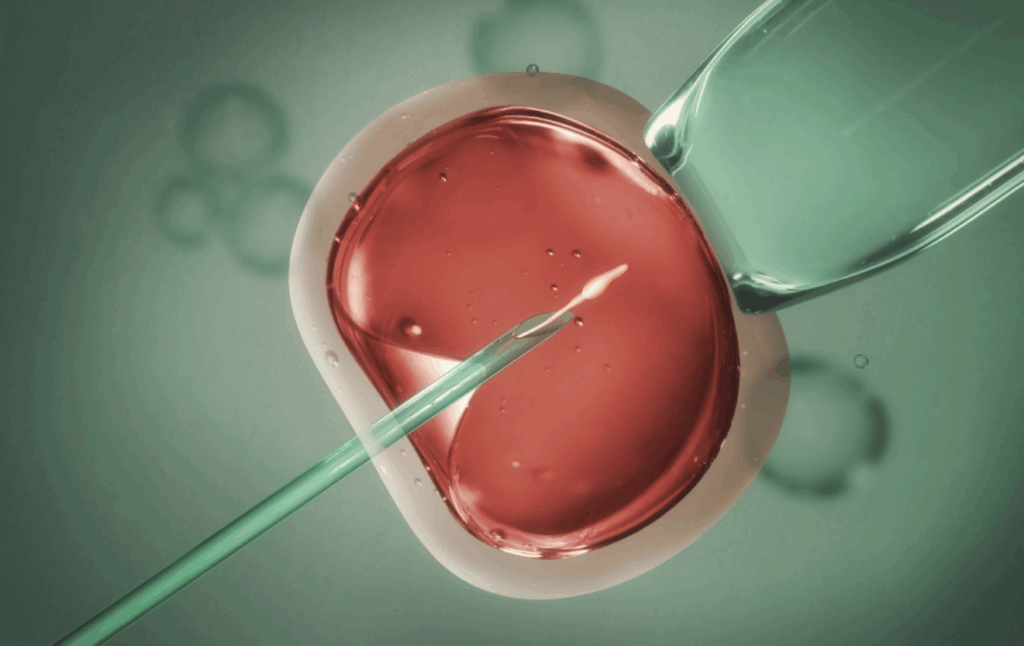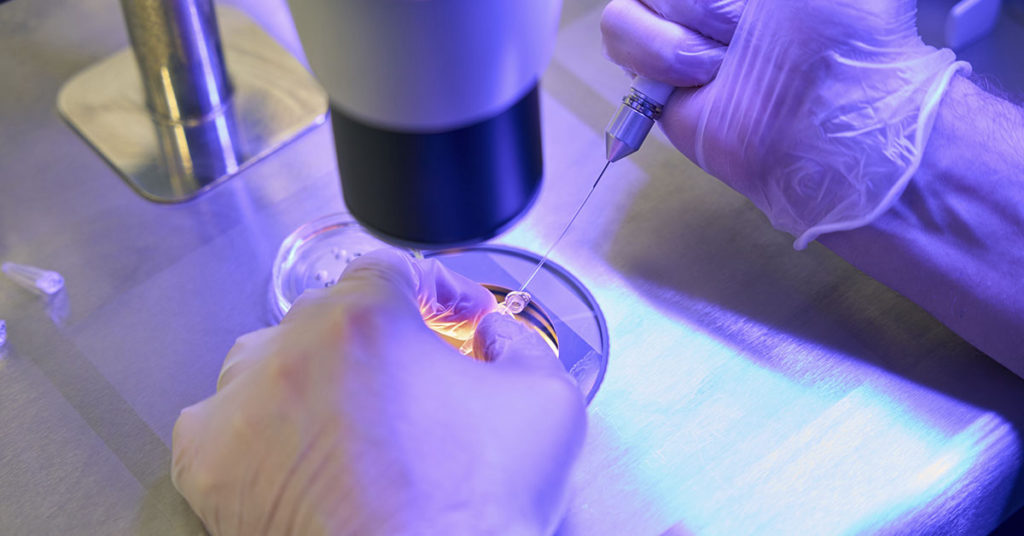In an extraordinary moment that blends the miracles of science and love, a Tennessee woman made history by giving birth to a baby girl conceived from a frozen embryo that had been stored for 27 years. Tina Gibson, only 29 at the time, delivered a healthy daughter who had technically been waiting to be born since the early 1990s. What makes the story even more striking is that the embryo used for the pregnancy was just two years younger than Tina herself. This rare event not only marks a major breakthrough in reproductive medicine but also highlights a growing yet often overlooked path to parenthood—embryo adoption. As couples continue to navigate infertility, options like this are gaining visibility. And with each successful birth, the possibilities expand.
The Gibson family’s story is a remarkable blend of personal perseverance and cutting-edge medical science. It shows how a frozen embryo, preserved for nearly three decades, can lead to a thriving new life. Their journey reshapes how we think about fertility and motherhood, as well as the boundaries of modern medicine.
A Family Made Possible by Frozen Embryo Adoption
Emma Wren Gibson was born in 2017, but her story began much earlier—in 1990, when the embryo that would become her was first frozen. The original donors had gone through in vitro fertilization (IVF) and decided to donate their unused embryos. These embryos were stored in liquid nitrogen, held at nearly -200°C, and maintained in a state where biological time stood still.

Tina and her husband, Benjamin, had longed for a child. Due to Benjamin’s cystic fibrosis, natural conception wasn’t possible. After researching options, they discovered embryo adoption through the National Embryo Donation Center (NEDC) in Knoxville, Tennessee. This organization specializes in matching donated embryos with families seeking to experience pregnancy and childbirth.
Although embryo adoption was unfamiliar territory, the Gibsons moved forward with hope. Doctors selected a frozen embryo, thawed it carefully, and implanted it into Tina’s uterus. Against all odds, she became pregnant on the first try. Emma’s birth became a global headline, as she was born from the longest-preserved frozen embryo known to result in a live birth.
Tina later said, “I just wanted a baby. I didn’t care if it was a world record.” Her words reflect the emotional weight behind the scientific achievement. For the Gibsons, Emma was not just a medical marvel—she was a dream fulfilled. One Frozen Embryo, Two Sisters, and a Medical Milestone
A Second Miracle Baby
The story didn’t end with Emma. In 2020, Tina gave birth to another daughter, Molly. Molly was Emma’s genetic sister, conceived from another frozen embryo from the same IVF cycle back in 1992. This time, the embryo had been frozen for over 27 years, making Molly the new record-holder.
These back-to-back births proved something scientists had long hoped: that embryos frozen for decades could still result in healthy babies. Both Emma and Molly were born without complications and are thriving today. Their births pushed the boundaries of what experts thought possible in fertility science.
Dr. Jeffrey Keenan, director of the NEDC, called the births “game-changing.” He explained, “This opens the door for thousands of families. It shows us that timelines for fertility may be more flexible than we imagined.”
With both girls now healthy and growing, the Gibson family is living proof that life can flourish—even after spending nearly 30 years in frozen stillness. Their story has helped normalize embryo adoption as a real and effective option for other couples facing infertility.
Emotional Impact, Ethical Questions, and Future Potential
The success of Emma and Molly’s births didn’t just shake the medical world—it also raised ethical and emotional questions. What does it mean for a child to be born from a frozen embryo nearly as old as their mother? How will these children feel about the unusual timeline of their conception?
For Tina and Benjamin, these concerns took a backseat to love. They see their daughters as blessings, not as biological anomalies. Tina often says, “I don’t think of her as an old embryo. She’s our little girl.”
Their story also brings attention to the emotional journey behind embryo adoption. Unlike traditional adoption or IVF, embryo adoption allows a woman to experience pregnancy while giving a donated embryo the chance at life. This unique process creates a powerful bond and deepens the sense of parenthood.
On a broader scale, the Gibsons’ experience challenges long-standing assumptions about fertility limits. Many people think of frozen embryos as short-term solutions—viable for a few years at most. But Emma and Molly’s births suggest otherwise. As long as proper storage conditions are met, embryos could remain viable for much longer than originally believed.
The implications for the future are profound. More families may now turn to embryo adoption, especially as the cost of IVF continues to rise. Additionally, older embryos that were once considered “expired” could gain new life in the right hands.

The Future of Frozen Embryo Fertility
The story of Emma and Molly Gibson is more than just a record-setting event. It’s a deeply personal look at how science and love can intersect to create something extraordinary. With the help of a frozen embryo, the Gibsons became parents and helped reshape the narrative around fertility, aging embryos, and the possibilities of modern medicine.
Their journey gives hope to countless others who may feel that time has passed them by. It proves that a frozen embryo, even after decades on ice, can still bring joy, and life. As medical technology continues to advance, stories like this one may soon become not just rare miracles, but everyday realities for families around the world.
Read More: First Baby Born Using Groundbreaking Technology to Mature Human Eggs Outside the Body

